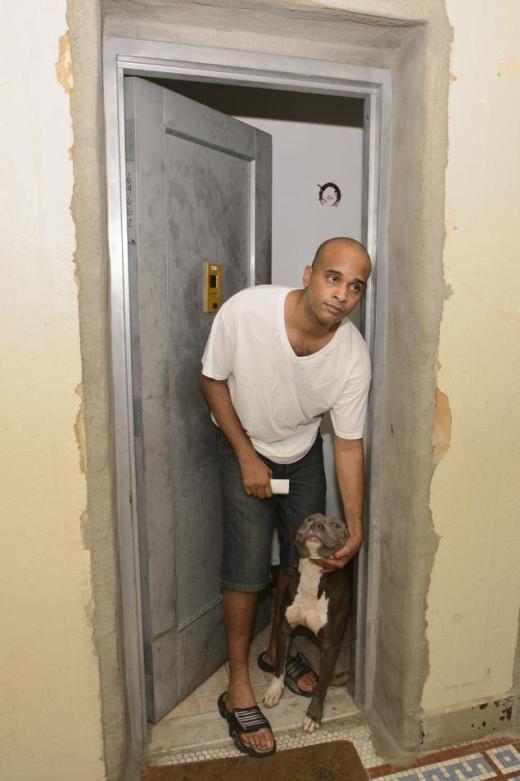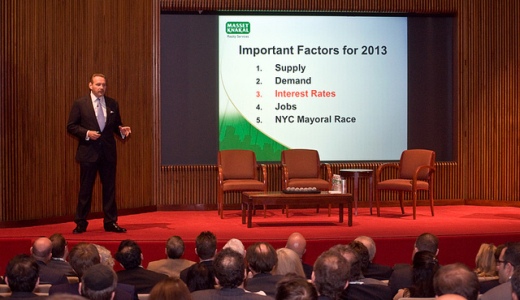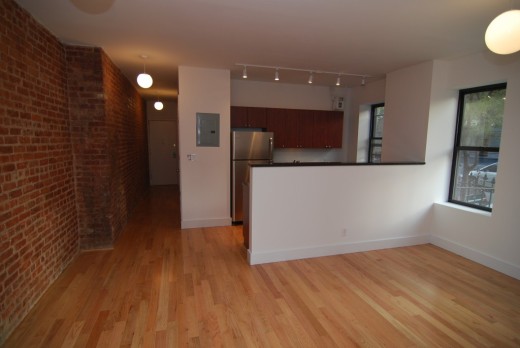 I guess it’s a combination of the summer and just being very busy with business, but I suddenly fell out of the habit of doing regular blog posts. I suppose I had also exhausted the low-hanging fruit in terms of potential topics relevant to owning and managing multifamily and mixed use buildings in New York City. However, my recent adventures that led up to a rather sensational article in The Daily News this week, seemed like it would make a worthwhile read for you all.
I guess it’s a combination of the summer and just being very busy with business, but I suddenly fell out of the habit of doing regular blog posts. I suppose I had also exhausted the low-hanging fruit in terms of potential topics relevant to owning and managing multifamily and mixed use buildings in New York City. However, my recent adventures that led up to a rather sensational article in The Daily News this week, seemed like it would make a worthwhile read for you all.
This whole matter revolves around something called SCRIE–the Senior Citizen Rent Increase Exemption program. This is a pretty significant safety net program that the City runs for seniors which, though noble in its cause, is subject to abuse. Under SCRIE, seniors at least 62 years old with less than $29,000 in annual income who spend at least 1/3 of their income on rent can get their rent frozen. Landlords are still entitled to the full legal rent and future increases, but any amount above the frozen rent of the tenant is paid to the landlord, eventually, via a tax abatement. The city accounting for all this is rather hard to follow, as is the timing of when payments happen. Thus, in my case, I do make sure the City has the correct monthly TAC (tenant abatement credit) in their records (the difference between the frozen and legal rents), but it’s just too much effort to really determine for every tenant if we are truly, in the end, getting the right total credits.
Landlords who have qualifying tenants must accept the program, even though it is quite a pain. If tenants renew their leases, they have to submit paperwork showing that there was a rent increase in order for you, the landlord, to get that increase as a further abatement. Until the NYC Dept. of Finance has approved the application for an increase, the landlord has to take the cash flow hit. If, after six months, the tenant has still not refiled, you are allowed to charge the tenant the full rent. But then, once they wake up, they can still file with SCRIE, who will make you adjust your records and back out any extra charges. The same issue holds when there is an MCI increase. You can’t charge the tenant, but have to make sure that SCRIE gets proper paperwork in order for you to get the increase as a tax abatement. If the tenant doesn’t do it, which they usually don’t, the onus is on the landlord to file the additional form.
Note that in one of our buildings, close to 30% of the tenants are on SCRIE or DRIE (a sister program for people claiming disabilities). As a result, the total tax abatements exceed our tax bill! Thus, around this time of year every year, I have to jump through hoops to get the Dept. of Finance to send me a rebate check so that I can physically get the money due to me and not have it forever sitting as a credit balance on the City’s books. Of course, it requires yet another form to be filled out to get this refund and you have to wait 4-6 weeks for it to be processed. (I’m smiling and shaking my head as I write this.)
Most SCRIE beneficiaries are nice older people who really only survive because of this program. Typically, they pay their frozen rent in a timely fashion, right after their social security check arrives. However, I’ve had two situations where I’ve seen the program abused, through a scam that I’m sure repeats itself with many other landlords. The basic idea is that the old person has alternative housing elsewhere, and, in essence, let’s some younger relative piggyback off the benefit. For the landlord, it’s generally too hard to prove that the senior is not there. Additionally, if the younger relative has been living there with, say, his grandmother, for the last two years in a regulated apartment, he typically has succession rights to the apartment. Thus, even if the landlord ousts the senior, the apartment still can be passed to the grandchild, though without the SCRIE benefit. For the landlord, it’s more or less the same bottom line, so not worth much of a fight.
However, my feeling, as an owner, is that this sort of fraud actually hurts your ability to grow the value of your building. In insulates the “heir to the apartment” from any increases in rent, ever, and makes it so there is no chance that they will ever move. That doesn’t really fit our program. Additionally, it’s a taxpayer rip off, which I’m not keen on.
Prior to the case that got Daily News coverage, I had another situation where my super kept telling me, “The old lady doesn’t live here. She’s back in the D.R. Only her grandson and maybe one other guy seems to live there.” I heard it enough times that we moved a security camera to focus on the appropriate landing and I started to religiously download surveillance video. After looking at close to a year’s video, I discovered that the grandmother indeed was not really living there, though she visited every few months. With their lease coming up for renewal, we started a non-primary residency case in landlord/tenant court. Though the tenant of record’s son admitted to me in court that his mother was at the apartment for only a fraction of the year, their feeling was that it was still “her apartment” and that she was entitled to keep it.
Rather than having an extended legal battle that could go either way (those of you who have been in landlord/tenant court know nothing is a given), I took another tact. I had been speaking to SCRIE and was told that if there was more than one person on the lease, SCRIE would look at the combined income in determining eligibility. I offered the grandson an opportunity to be added to the lease (something he had previously turned down prior to getting them into court) and required that he fill out a normal application. In his application he represented making $40K per year, which should have disqualified the household from SCRIE. However, in the end, the grandmother and grandson took their new lease to SCRIE and got approved. This leads me to believe that you can simply tell SCRIE whatever you want in order to qualify. As long as you are not receiving any government payments that they can see, there is no way to verify your income. And in the case of a younger person, they can simply say they are a student or unemployed, sign an affidavit, and no one will question it.
The case reported in the Daily News was a little different. In this one, the grandmother and grandson were indeed living together since we bought the building. Over the years, we’d had a number of complaints of suspected drug dealing, noise, and the renting out of rooms. We did find an illegal deadbolt lock on one of the bedrooms which substantiated the last claim. As a result, we moved a camera to the top of the stairs at this landing approaching the 4th floor. I didn’t really monitor it much until the grandmother moved out last fall, after having her second leg amputated due to diabetes (note again that the apartment is on the 4th floor), and I started getting multiple complaints from long term tenants about Apt. 4B. There were stories of fights, partying, police visits, etc. It was enough that it would have been irresponsible and a potential liability if we did nothing.
In the meantime, the grandmother was being moved from hospital to hospital and falling behind in rent as neither her daughter or grandson had access to her bank account, I believe because she was afraid of having her money stolen by family members. This was confirmed by a social worker who got attached to her case for a while and called me to consult on what to do. Ultimately, we ended up starting a non-payment proceeding in court once she was four months behind. When we got to court, no one showed up on behalf of the tenant. After multiple adjournments, we asked the court to assign a guardian ad litem so that we could move forward with the case with a court appointed guardian to stand in the tenant’s shoes.
Through this several month process, some payments came in, but they weren’t from the grandmother. In fact, the grandson even admitted at one point to having one of his roommates go get a bank check because “I’m not good with money.” In any case, things continued to get worse and there was no sign of grandma ever being there. One night there was a police visit where a girlfriend was arrested for parole violation. Another night, a baby shower brought a parade of people in and out of the apartment all night until morning and, I’m told by neighbors, three visits by the police. The next morning there was spilled beer and cigarette butts all over our common areas.
We observed residents of the apartment and visitors coming and going at all hours. Often they would be smoking in the halls, carrying open bottles, or just loitering. At times they gave “the finger” to the cameras, indicating that they would do whatever they wanted and were untouchable. The grandson received numerous letters about this and I personally explained to him, “Jose, just behave respectfully, don’t make noise after 10PM, don’t you or your guests smoke in the hallways, and don’t give others a reason to complain to me, and we’ll be cool.” Yet, the guy continued his behavior.
All along, he professed that his grandmother was staying with him on weekends and spending the week at his mother’s house in Queens (where the Daily News reporter confirmed she lives and was told, by the daughter, is suffering form Altzheimer’s). When we recently put in an electronic key system, the grandson asked for a key for his grandmother. I told him I had to give it to her myself and would be back to the building on Saturday. He stated that she couldn’t make it that Saturday, of course! So I wrote to the grandmother directly, telling her to call me so I could make a special trip to the building to meet her. As you may have guessed, no call has come.
Ultimately, I got so fed up that I went down to SCRIE’s office and file an “inquiry” so that perhaps they could stop paying to have a 34 year old and his buddies get a cheap rent. When SCRIE eventually said this was a “landlord/tenant issue,” I’d had enough. I Googled “SCRIE fraud” and found that in 2011 the Daily News had reported that a NYC Finance audit had found at least $3 million in SCRIE benefits that had been paid to dead people. I contacted the paper and they liked the hook of my story enough to take someone away from the mayoral race to write an article.
As for SCRIE, I sent a copy of the article to the director of the agency the day it ran and, miraculously, she wrote back to state that they had already written me a letter that morning stating that they would be investigating this case. In the meantime, I’ve had a bunch of back and forth with them and they are going to reopen the other case I mentioned as well. It’s a shame that I had to turn to the media to make an agency do what they should have done in the first place. Let’s hope they do the right thing this time around, so that program benefits are only going to those who deserve them.


























![ar127420382446375[1]](https://mvinocur.files.wordpress.com/2013/03/ar1274203824463751.jpg?w=150&h=100)
![ar127420365851939[1]](https://mvinocur.files.wordpress.com/2013/03/ar1274203658519391.jpg?w=150&h=100)